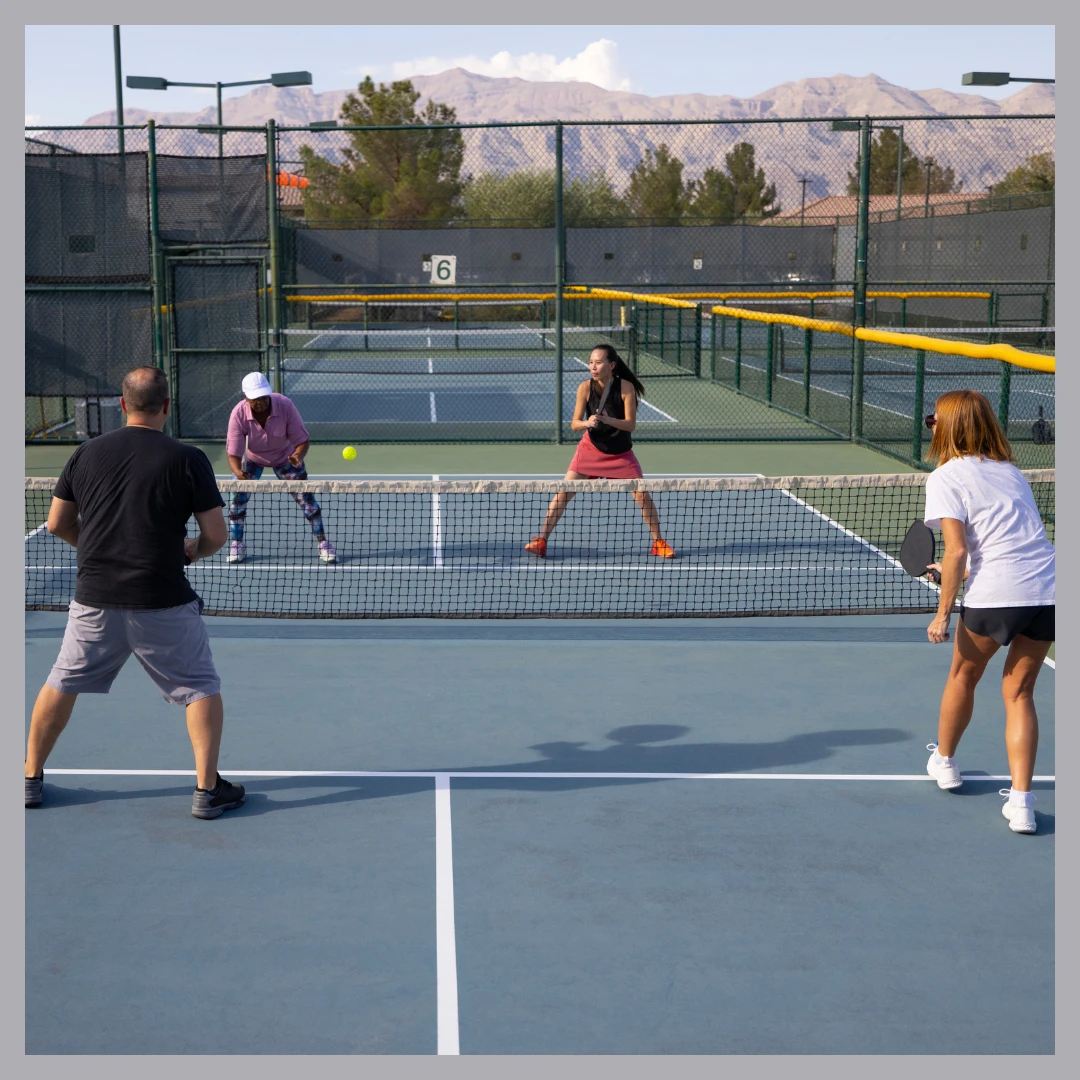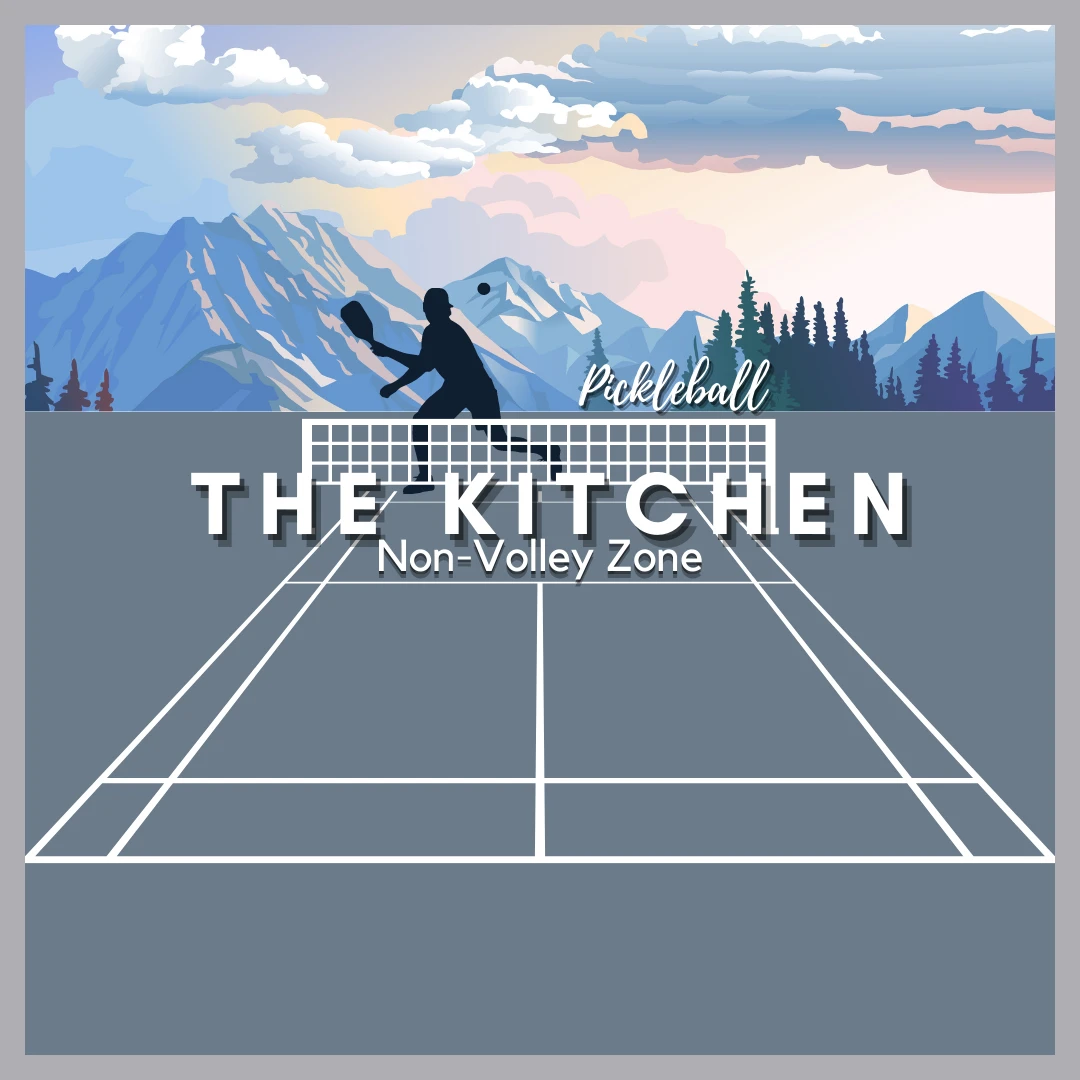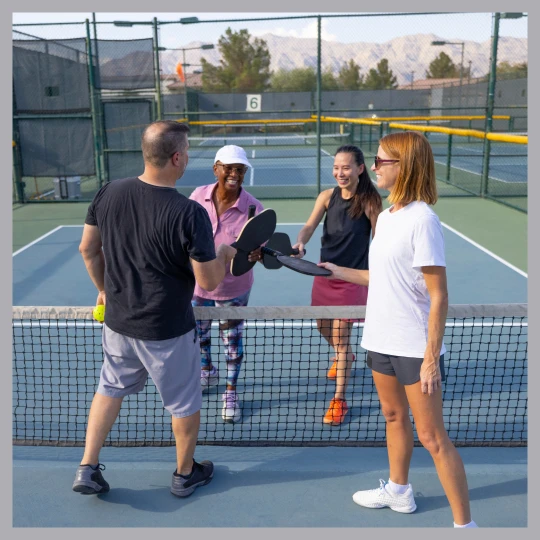Pickleball Doubles Play: Winning Tactics and Teamwork Essentials
- Team Pickleball
 If you are already familiar with playing Pickleball Singles, you’re in luck because the rules for Pickleball Doubles are similar. As a beginner who just recently started playing Pickleball with family, the dynamics of Pickleball doubles intrigues me. The excitement that elevates to an entirely new level keeps me drawn to the game’s fast-paced nature.
If you are already familiar with playing Pickleball Singles, you’re in luck because the rules for Pickleball Doubles are similar. As a beginner who just recently started playing Pickleball with family, the dynamics of Pickleball doubles intrigues me. The excitement that elevates to an entirely new level keeps me drawn to the game’s fast-paced nature.
Picture yourself stepping onto a pickleball court drenched in sunlight, with paddles in your hand. Feel your heart race with excitement as you hear the “pop” of the Pickleball meeting the paddle; thus, experience the satisfying pop as the ball crosses the net.
The seamless teamwork and coordination between you and your partner define the exciting realm of Pickleball doubles. Regardless of whether you’ve honed your skills as an experienced player or are a newbie brimming with enthusiasm to immerse yourself in this thrilling sport, this blog serves as your definitive guide to mastering the doubles play on the court.
Let’s dive right into the fundamental elements of Pickleball doubles play. But first, you need to understand that the court’s positioning is equally important and critical. Secondly, instead of waiting for the ball, you and your partner must be strategically positioned to cover the court effectively. Finally, rather than reacting, take control by moving into the best spots.
Pickleball Doubles Rules
Court and Equipment – The court dimension for Pickleball is the same as the badminton court, measuring 20 feet wide and 44 feet long. The sidelines have a net height of 36 inches, while it’s 34 inches at the center.
1. Initiating the Game – The Pickleball game starts as the server initiates play from the right side of the court.
2. Service Attempts and Lets – Each server is allowed only one service attempt unless an occurrence of a let, which happens when the ball hits the top of the net but stays within the proper service court.
3. Net Contact – A fault occurs if a player, their clothing, or paddle touches the net while the ball is in play.
4. Targeting the Opponent’s Service Area – While serving, the player must aim to land the serve within the diagonally opposite service area of the opponent.
Serving
The game starts with the serving team initiating the serve. Following an underhand technique, the server must serve diagonally across the net and land within the opposing diagonal service court. In the event that the opposing team wins a point, the server continues serving from the same side; conversely, if they lose the point, the serve shifts to the other team’s server.
1. Initial Service Turn – To initiate the game, the first serving team will assign only one player to take a service turn before losing the serve to the opponents. Subsequently, both team members will each have an opportunity to serve before the serve is turned over to the opponents.
2. Switching Sides on Score – Whenever a point is scored, the server and their partner switch sides of the court, whereas the receiving team maintains their position.
3. Serving From the Right or Left – Depending on whether the serving team’s score is even or odd, the server will initiate the serve from the right or left side of the court, respectively.
4. Serve Requirements – Further, the player must execute an underhand technique for a proper serve. Both feet must remain behind the baseline during the strike. Neither foot may touch the baseline nor the court until after the ball is served.
Double-Bounce Rule
Following the serve, the receiving team must allow the ball to bounce before initiating their return hit. At the same time, the serving team must also adhere to this bounce-before-hit rule. Once these initial bounces occur, players can subsequently choose between volleying or playing the ball immediately, without the mandatory bounce.
Non-Volley Zone
 Also known as the “Kitchen.” This area is a 7-foot area designated on both sides of the net. During the game, players must refrain from hitting the ball while standing in this zone. This restriction allows players to play more strategically as opposed to camping out in the Kitchen and smashing the ball back to their opponents.
Also known as the “Kitchen.” This area is a 7-foot area designated on both sides of the net. During the game, players must refrain from hitting the ball while standing in this zone. This restriction allows players to play more strategically as opposed to camping out in the Kitchen and smashing the ball back to their opponents.
Non-Volley Zone and Bouncing – Note that to note that Players standing in the Non-Volley Zone are prohibited from striking the ball before it bounces.
Scoring – In Pickleball Doubles, rally scoring is the norm, allowing both the serving and receiving teams to score points. Typically, games are played to 11 points, with a 2-point advantage to win.
The double play follows a similar Pickleball scoring pattern as singles but with an additional twist. With two players on each team, the serving team can score points only while serving. However, if the opposing team wins the rally and gains the serve, they also get the opportunity to score points. This “rally scoring” system means that both teams can win points regardless of who is serving.
Similar to a single-play, players generally play the game to 11, 15, or 21 points, with a two-point lead required to secure victory. In addition, Pickleball scoring for Doubles play follows specific rules and guidelines to ensure fair and competitive matches. These Pickleball scoring rules not only dictate how the game is played but also foster teamwork, communication, and coordination between players.
Server Rotation
In doubles, the serving team alone has the opportunity to accumulate points. In the event that the serving team loses a point, the opposing team, however, gains the serve while keeping the serving order. Thereafter, the serving team members rotate positions when they regain the serve. The first server, meanwhile, maintains its role until the serving team commits a fault. At that point, the second server takes over. This rotation continues throughout the Pickleball game.
Faults – Faults occur if the ball is hit out of bounds, into the net, or if the server’s foot crosses the baseline before making contact with the ball. Furthermore, it is considered a fault if the ball is volleyed from the kitchen before it bounces or when the ball is hit twice by the same player in a single shot.
1. Ball In and Faults – If any part of the ball touches the sideline or baseline, it is deemed “in.” Hitting the ball into the net or outside the boundaries results in a fault. Failing to hit the ball before it bounces twice is also considered a fault for the receiver.
2. Player or Clothing Contact – It is considered a fault if the ball makes contact with a player or their clothing.
3. Ceiling, Wall, or Object Contact – A fault is committed if the ball hits the ceiling, wall, or any permanent object before landing in the court.
4. Scoring Points for Faults – In case of a fault committed by the receiving team, the serving team gains a point.
Pickleball Etiquette and Sportsmanship
 Like any sport, Pickleball values good sportsmanship and proper etiquette. Its charm lies not only in the excitement of the game but also in the spirit of sportsmanship and etiquette its players uphold.
Like any sport, Pickleball values good sportsmanship and proper etiquette. Its charm lies not only in the excitement of the game but also in the spirit of sportsmanship and etiquette its players uphold.
1. Respect Your Opponents: Always treat your opponents respectfully, regardless of the game’s intensity. A friendly smile and a handshake after the match go a long way in promoting a positive atmosphere.
2. Avoid Distractions – Avoid distractions like loud talking or sudden movements during play while on the court. Concentration is vital for a fair and exciting game.
3. Cheer for Great Shots: Celebrate not only your fantastic shots but also those made by your opponents. Acknowledge a great shot; it shows appreciation for the game’s skill, promotes camaraderie, and strengthens the sense of mutual respect. In the same way, a friendly atmosphere contributes significantly to the overall experience and leaves a positive impression among players.
The Importance of Effective Communication and Strategy in Pickleball Doubles
 Next, let’s talk about the art of teamwork and synergy. Eventually, understanding each other’s strengths and weaknesses is also important. Rather than striving for individual glory, focus on complementing each other’s skills. Choose to capitalize on your partner’s strengths and provide support where needed.
Next, let’s talk about the art of teamwork and synergy. Eventually, understanding each other’s strengths and weaknesses is also important. Rather than striving for individual glory, focus on complementing each other’s skills. Choose to capitalize on your partner’s strengths and provide support where needed.
Communication is the cornerstone of successful collaboration between partners in Pickleball Doubles. The ability to convey information clearly and concisely is equally important, as it directly impacts how the game is played. Effective communication will allow both players to formulate techniques and strategies during a match which can significantly affect the game’s outcome. This collaboration not only elevates an individual’s confidence but also enhances overall team performance.
Conclusion
As you embark on your journey to become a Pickleball doubles champion, it’s important to realize that teamwork, communication, and strategy are your greatest allies. Moreover, this comprehensive guide provides the means to improve your performance from a satisfactory level to an exceptional one. With these factors in mind, move enthusiastically onto the courts and embrace the excitement of perfectly executing tricks to surprise your adversaries. Ultimately, equipped with the knowledge from this guide and fueled by your determination, you’re on a clear path to mastering the craft of Pickleball doubles!
If you would like us to feature your brand in our upcoming Pickleball blogs, Collaborate with Us. We’d love to have you featured.

